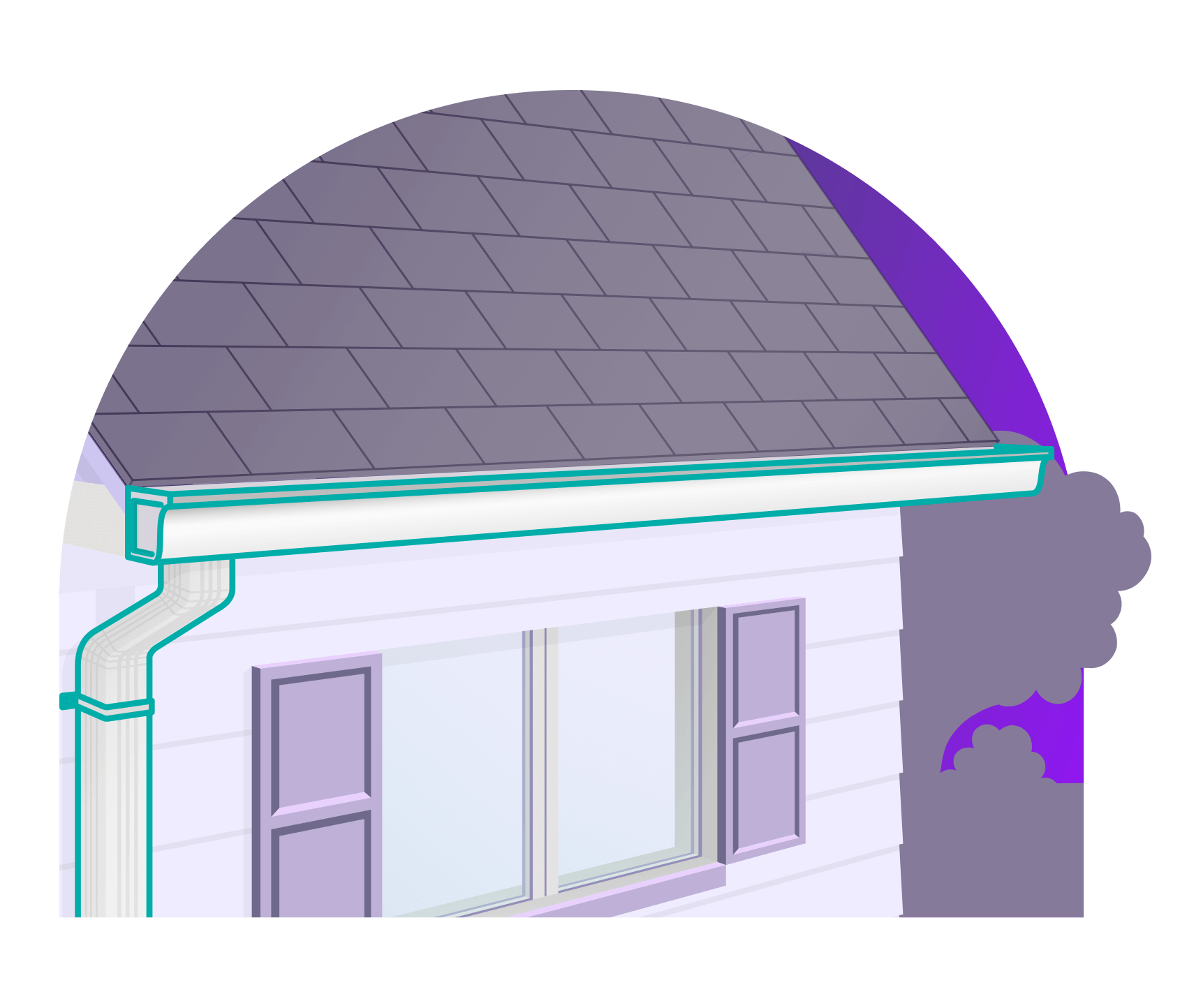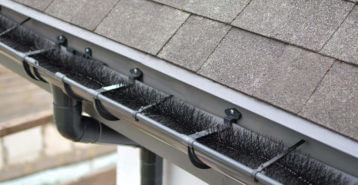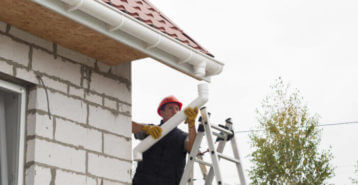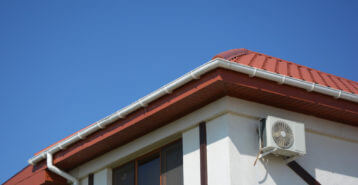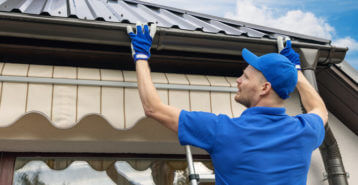How to Choose the Right Gutter Size for Your Home
Installing a rain gutter system is one of the simplest and most effective ways to protect your home from water damage caused by heavy rain or melting snow. By directing water away from your roof, foundation, and landscaping, gutters help prevent issues like foundation cracks, siding damage, and soil erosion. But to get the best results, it’s important to choose the right gutter size. Gutters that are too small can overflow, while oversized ones can lead to standing water and unnecessary costs. In this guide, we’ll walk you through common gutter sizes and how to choose the right fit for your home and local climate before starting your project.
Standard Gutter Sizes
When it comes to choosing gutters, size matters. The two most common gutter widths are 5-inch and 6-inch, and the right one for your home often depends on the style of gutter and the amount of rainfall in your area. Here’s how these sizes typically stack up:
- 6-inch Half-Round Gutters: A popular choice for homes in regions with heavy rain or snow. These wider gutters can handle larger volumes of water and reduce the risk of overflow.
- 5-inch Half-Round Gutters: A good option for homes in drier climates, where there’s less rainfall and runoff to manage.
K-Style Gutters
K-style gutters are a common choice for many homes because their deeper, flat-bottomed design handles water runoff efficiently. Here’s a quick look at the most popular sizes:
- 5-inch K-Style Gutters: The most popular size for residential homes. Thanks to their deeper trough, they can handle heavy rain and snowmelt effectively—especially when paired with gutter guards to keep debris out.
- 6-inch K-Style Gutters: Ideal for areas that see frequent, heavy rainfall. The extra width provides added capacity and helps prevent water from spilling over the edge during big storms.

Custom and Oversized Gutters
While standard sizes are effective for many homes, some situations call for custom or oversized gutters to ensure efficient water flow. Factors that might necessitate larger gutters include:
- Roof Pitch and Steepness: Steeper roofs can channel water more quickly, requiring larger gutters to handle the flow.
- Roofline Size and Design: A larger or more complex roof may need bigger gutters to manage the increased runoff.
- Regional Rainfall Density: In areas with high rainfall, oversized gutters can prevent overflow and damage.
Though larger gutters come with a higher price tag, they can offer better protection for homes with specific needs. To estimate the cost of installing the right gutters for your home, use our free Gutter Installation Cost Calculator tool for an accurate quote.
Gutter Thickness: Why It Matters
When choosing the right gutters for your home, size isn’t the only thing to consider. The thickness, or gauge, of your gutter material also plays a big role in how well your system will hold up over time. Thicker gutters are more durable and better equipped to handle harsh weather, heavy rain, and snow buildup.
The ideal gutter gauge for your home depends on two things: the material you choose and the amount of rainfall in your area. Here’s a quick guide to common gutter materials and their typical thickness ranges:
Aluminum
Aluminum is the most popular material for residential gutters. Its thickness is measured in thousandths of an inch (e.g., .019 to .032 inches). The industry standard is .027 gauge, which is strong enough for most homes in mild to moderate climates. If you live in an area with heavy rain, snow, or hurricanes, consider upgrading to .032 gauge aluminum for extra durability.
Copper
Copper gutters are known for their strength and long lifespan. They typically come in 20-gauge thickness, but options range from 16-gauge (thicker) to 24-gauge (thinner). If your home is in an area with heavy rainfall or snowfall, a 16-gauge copper gutter system offers added protection.
Steel
Steel gutters are strong and sturdy, with thicknesses ranging from 24- to 30-gauge. The most common option is 26-gauge steel, which balances durability with cost. If you live in a snowy or storm-prone region, upgrading to 24-gauge steel is a smart choice. For drier climates, 30-gauge steel may be enough. Keep in mind that many pros will recommend 26- to 28-gauge steel downspouts to match.
Vinyl
Vinyl gutters are a budget-friendly option made from PVC plastic. While they can work well in mild, dry climates, they’re not ideal for areas with heavy rainfall or freezing temperatures. If you choose vinyl, make sure the material is thick enough to withstand the conditions in your area—your contractor can help you decide.
How to Calculate the Right Gutter Size for Your Home
While a professional will handle exact measurements, you can estimate the gutter size your home needs with these simple steps:
1. Measure Your Roof Area: measure the length and width of each roof section, multiply them, and add the totals to find your roof’s square footage.
2. Find Your Roof’s Pitch: place a level on your roof and measure 12 inches out. From that point, measure the vertical drop to the roof. For example, a 6-inch drop means a 6/12 pitch (6 inches rise per 12 inches of run).
| Roof pitch | Multiplier |
|---|---|
| Up to 3 degrees | 0 |
| 4 to 5 degrees | 1.05 |
| 6 to 8 degrees | 1.1 |
| 9 to 12 degrees | 1.2 |
| 12 or more degrees | 1.3 |
3. Calculate the Gutter Size: use your roof’s square footage and pitch to estimate the right gutter size using a pitch multiplier.
- 5,500 to 7,500: Use 5-inch K-style gutters.
- Above 7,500: Consider 6-inch or thicker gutters for higher water capacity.
These guidelines are a starting point. A professional installer can offer precise recommendations based on climate, rain levels, and drainage needs.
Calculating What Size Gutter Downspouts Your Home Needs
Downspouts are also an essential aspect of a properly functioning gutter system. They transport water away from the roofline to the ground, where it can be piped away from your foundation through a French drain or left to drain naturally from the bottom of the spout, as long as it’s moving away from the foundation.
Downspouts come in a variety of shapes, including boxed, spiral, and round. Boxed gutters pair well with K-style gutters, while round downspouts pair well with half-round gutters. Common downspout widths for 5-inch K-style gutters are either 2” by 3” or 3” by 4” if you need greater amounts of stormwater to flow out of the gutter trough. Half-round gutter downspouts, meanwhile, are commonly sold in 3” or 4” diameters.
According to the Sheet Metal and Air Conditioning Contractors’ National Association (SMACNA), these are the drainage capacities for common sizes of rectangular and round gutter downspouts:
Round Downspouts:
- 3″ downspouts: 706 square feet
- 4″ downspouts: 1,255 square feet
Rectangular Downspouts:
- 2″ x 3″: 600 square feet
- 3″ x 4″: 1,200 square feet
Wider downspouts also can be installed to accommodate homes with larger-sized gutters.
Gutter Pitch
One reason why it’s important to hire a professional to install your new gutters is to ensure the gutters have the proper pitch when attached to your home’s fascia. Gutters don’t sit perfectly level to the ground. Instead, each section is slightly sloped to ensure all the water in the trough flows toward the downspouts.
This slight slant is imperceptible on small runs but may be more noticeable on larger sections. Installers typically add ¼” of slope per every 10 feet. So if you have a 40-foot run across one section of your home your gutters will have 1” of fall. However, installers may start the pitch from the center of longer sections, so you would have ½” of fall from the center extending to the ends of a 40-foot section.
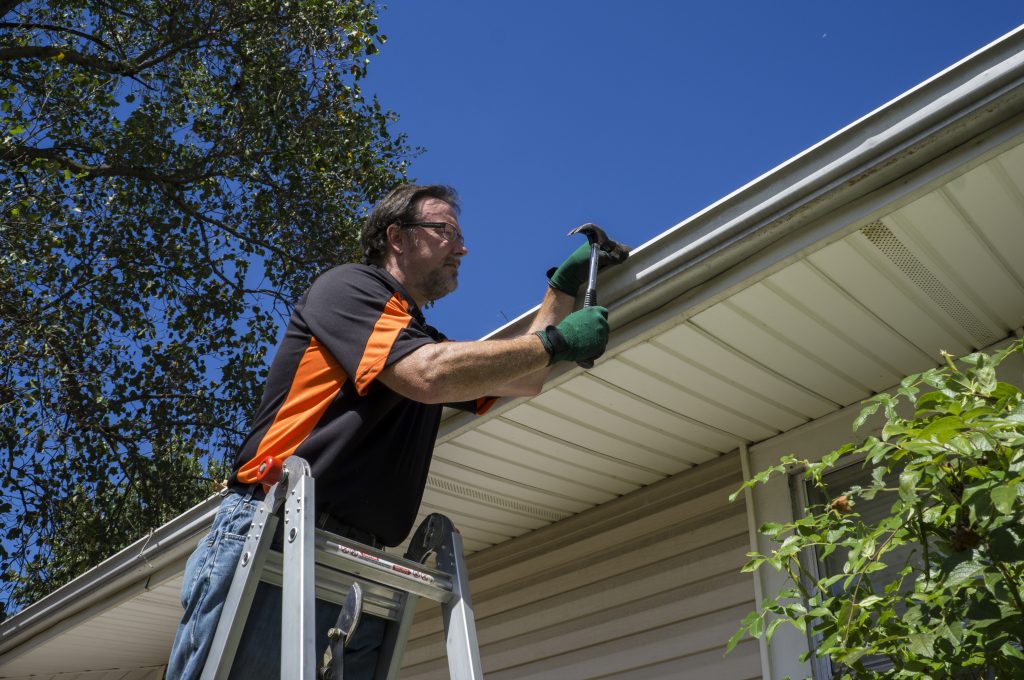
Why You Should Hire a Professional for Gutter Installation
We’ve covered a lot about gutter sizing and installation — but it’s worth emphasizing why it’s best to leave the job to a professional. Here’s a quick recap:
- Proper Drainage Requires Precise Slope: Gutters need to be installed at the correct angle to ensure water flows smoothly away from your home.
- Sizing Involves Complex Calculations: Professionals can quickly determine the right gutter size based on your home’s roof size, pitch, and rainfall intensity—saving you time and hassle.
- Seamless Gutters Are Made Onsite: Gutter contractors use specialized roll-form machines to custom-make seamless gutters right at your home.
- Safety and Experience Matter: Pros have the tools and experience to work safely on ladders and rooftops without damaging your roof or risking injury.
Hiring a licensed gutter professional ensures the job is done right, protecting your home from costly water damage.
When you’re ready to install new gutters on your home, Modernize can put you in touch with licensed gutter installation contractors in your area. The best practice to find the best price and professional for your project is to compare quotes from 3 to 4 local contractors.
Compare top-rated gutters pros in your area.
Read real homeowner reviews, explore qualifications, and view promotions. Modernize makes it easy to browse professionals and find one that will be perfect for your project.
